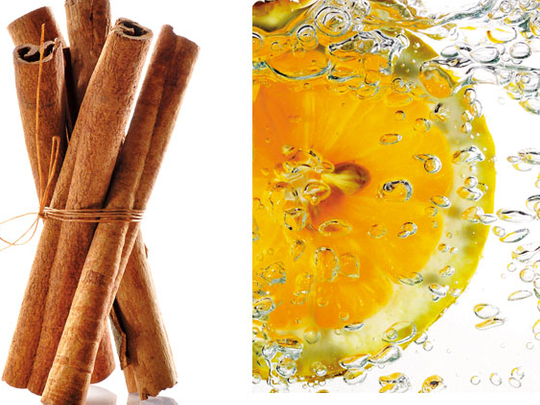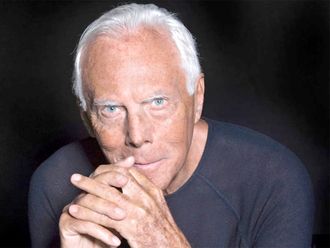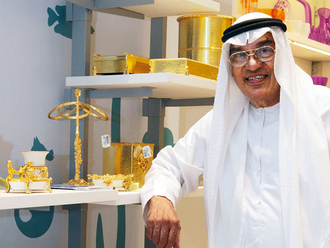
You are what you wear. It is as true of clothes as it is of a perfume. Just as people notice the trends you follow with the clothes you wear, people give your personality an adjective according to the scent that you leave in your wake.
For you to assert your individuality through perfume, you would first need to know the real you. Of course, being women, we are famous for our many moods. One evening might have you in a classical state of mind while another may have you feel ethereal and mysterious. You could be the kind of woman who wears what your mother wore, for the rest of your life or you would never want to go near it. You may have a signature perfume or you may decide that a signature looks best on a cheque.
Or you could actually take the help of someone to blend a perfume for you that perfectly captures the essential you. When spoilt for choices, why not spoil yourself more? So I decided I would go and take the help of a few experts to see if my perfume preferences were on track or was my choice of scents so far a schizophrenic clash with my inner self?
This one's for me
Feeling like a wizard's apprentice I ventured out to discover my true temperament by creating my own perfume. When perfumers do that they have over 200 ingredients to experiment with and the process of figuring out proportions is complex. But mine was a smaller attempt in comparison, the kind anyone can aspire to do
I soon found myself at the ‘My Inspiration' counter at Ajmal Perfumes store in Mall of the Emirates. The perfumery with its exquisite scents bottled in calibrated glass vats compels you to explore your true self through scents. I was here to concoct my own magic potion.
On any given day, an experienced shop attendant is at hand at the counter to guide you; I had none other than Abdulla Ajmal, deputy general manager, Ajmal Perfumes, himself do the honours.
There is an art and science to the intricate job of a fragrance creation as I was to learn soon. An education about the variety of fragrances, their intensity and volatility is a rite of passage.
First, you have to look through the fragrance intensity chart to understand which fragrances have the most potent scents with sharp smells, differentiate the spicy from the lighter ones and learn to recognise which fragrances with high volatility are best suited to create the top notes that diffuse quickly. Those with lesser volatility are chosen for base and middle notes.
The perfumer can also ask you about the kind of diffusive power you require. If you want a perfume that wafts through the moment you enter through the door, you can choose ingredients accordingly. But if you are looking for a perfume that diffuses its fragrance more subtly, you can pick more ‘intimate' ingredients.
I spent a very pleasant half hour, tinkering with bottles, opening them, taking in the first flush of a fragrance, allowing it to settle into my olfactories before moving to that cloistered smell station in my brain. It was a riot of scents and I wanted to take my time to mix and match and arrive at my own unique arrangement.
Once the ingredients were chosen, I was ‘educated' about the kind of combinations that work, the choice of smells in the base, middle and top notes. How much of what works best is what is taught to you. Once all that was settled I had to choose between a ‘concentrate' or a ‘spray'. The concentrate is a smaller bottle with the undiluted combination of the essential oils I picked up for my creation while a spray would be a dilution of these with cologne.
I chose a 100 ml spray.
From then on the exercise was like a fine dance, measured in moments - a slow step, few quick side steps, half a twirl, a jive and a complete piroutte! You could compare the joy of creating your perfume to any creation - be it a dance, a musical composition, a piece of art or even the creation of an exotic recipe. All the elements of creativty were present. I chose a combination of musk - 10 ml, spicy woody - 5ml, woody - 3ml and floral (lavender) - 2ml. A total of 20ml of concentrate to be blended with about 80ml of very mild floral cologne.
The vats themselves are interestingly calibrated. All I had to do was move the notch to the calibration I required, lift the glass column up and press it down to push the essential oil into the nozzle through which it came into my 100 ml bottle. Once a total of 20ml of the concentrates were in my bottle, I moved to the vat of cologne, repeated the calibration setting and filled up the bottle almost three fourths with it. "Never fill the bottle completely. Once you have space, you blend the smells and if you find you require to tweak it a bit and add something more, you must have space to do so," advised Ajmal. We shook the bottle and when I smelled it, it just seemed the perfect creation, so we topped up the cologne and fitted the spray nozzle.
My fragrance was born.
I christened it - ENTICE. This was my own and would always be. I was advised to leave it untouched for a couple of days until all the concentrates had finally merged with each other into an exotic blend.
The pefumery now has a record of ENTICE's proportions, but the great thing here is that it is exclusive to me. The store will never make it in the same combination for anyone else. Whenever I want my refill, I can order the same by simply letting them know of the serial code.
What my fragrance says about me
There is a little bit of a dreamer, part romantic, part practical, part emotional person in me. It would be difficult to pinpoint what I really am, but different fragrances give out different clues about you. Florals are feminine and symbolise emotional happiness, light romance and soft temperaments; citrus-fruity smells are unisex and are chosen by the young and breezy; floral fresh, like green grass, are for those who are outdoorsy. Woody and oriental fragrances like patchouli, musk. cedarwood and gardenia symbolise earthiness, sensuality and warmth. Since I chose musk as my base and augmented it with other woody fragrances, I am, according to perfume lexicon, definitely very earthy and sensual! (That sounds good!). I am also a romantic and want to be rich with happy emotions. (Anyone out there with similar aspirations?)
The experiment at Ajmal perfumes was crafted to discover my temperament. It also involved doing a multiple choices test. When outdoors are you more drawn to the sea or thick forests? Do you like smooth fabric or matted texture? What is your favourite colour - red, yellow, blue or orange? The results were then quickly computed to give you a summation of who you are and what fragrance would suit you. Even a single change of option could change the results, a fact that smell scientists around the world have researched and corroborated.
Oriental versus Western
Having created my own perfume, I now wanted to know the most obvious thing - how do perfumes created by others for you work? Says Ajmal, "Perfumers are like tea tasters - they are the soul of the company," he says. A fragrance is created, like a musical symphony, based on the brief provided to them.
"A good perfumer would know at least about a 100 natural ingredients and a few hundred synthetic ingredients from which he could pick and choose his combination. Today, almost all organic ingredients like vanilla, lavender and even musk can be synthetically manufactured." I am not sure if that is a good thing or not, but as long as I get to smell like lavender, should I be fussed about its origins? Farm-fresh or lab-fresh, lavender is what I want.
Talking of which, what are the top, middle and bottom notes and why can't a perfume be constructed in any other way?
Harmony of notes is important
"A perfume is a composition, says Ajmal. And every composition, as you know, must have notes for it to become one. Depending on the manner in which a perfumer creates a fragrance, certain notes will be subtle, others will seem to emanate from the very heart of the perfume and yet others will linger for hours after the perfume is actually worn on the body. That first burst of a spray and the smells you enjoy? They are the top notes. They kind of hang around for a short while and make a quiet exit. Then come the middle notes, from the essential oil or oils that is at the heart of the blend. These linger for more than 30-40 minutes after which they find their feet and move on. The base notes, or the smell that stays on you right through long hours (about four or so), is what the perfume is really all about. "
While Western perfumeries perfected the art and science of perfume making, the knowledge of fragrances, their potencies and their distillation has been around in the Oriental world for around 5,000 years. Oriental perfumers were familiar with the process of extraction and the fact that smell had a structure, although they were not so aware of the sophisticated chemistry involved in it - the movement of the molecules, etc.
In the beginning Oriental perfumes could be concentrates of just one essential oil - sandalwood, oudh (agar wood), cinnamon, clove, rose, jasmine. But the top, middle and bottom notes were always present, says Ajmal. "If you take a single concentrate of let's say sandalwood, even that has distinct top, middle and bottom notes. Blending different fragrances to create unique new ones did not take them very long.
"Traditionally, there was a big difference in the manner in which Oriental perfumes were created as compared to their French/Continental counterparts." Oriental perfumes were typically created from organic extracts or the essence of certain flowers, roots or resins and even spices such as oudh, rose, sandalwood, saffron, cardamom, cinnamon, clove, tobacco. They used heavy notes that lasted longer. Western perfumeries used lighter notes such as those extracted from bergamot, neroli, wildflowers and also some synthetic aquamarine creations.
"Our brand has been traditionally associated with oudh," says Ajmal. "Oudh basically comes from the Agar trees. When a certain fungus attacks it, the tree secretes an enzyme to contain the spread of the fungus. After a while the growth of the fungus is arrested while the enzyme continues to spread through the tree. It is this enzyme that is embedded in the agar wood that forms the oudh. Typically to extract 1.5 ml of oudh oil about a 1kg of oudh chips have to be boiled for about 15 days. It is a very intensive method. However, they have diversified to create Western perfumes too."
The lines between Oriental and Western perfumes have gradually merged in recent times as more and more Western perfumeries are using oriental fragrances derived from sandalwood, spices and fruits in their creations, while orientalists have grown to include many Western ingredients and synthetic fragrances in their creations.
"The real difference," says Ajmal, "that clearly exists even today is the one between Eau De Toilette (EDT) and Eau D'Parfum (EDP). The EDTs have 4-7 per cent concentration of perfume while the EDPs have 8-15 per cent concentration. There are categories of EDP with concentration of 12-15 per cent perfumes. The higher the potency of the perfume, the more value it has."
Smell right for the occasion
Some basic guidelines according to perfumers:
- When going for a business meeting, choose a subtle floral fragrance with fresh notes.
- For an afternoon at the races or a sports event, go for marine notes in aquatic creations. Aquatic perfumes are created with synthetic fragrances that carry the fresh smell of the sea and a slight floral or citrus hint.
- For an evening out you could either opt for heavy, sensual sandalwood base notes or smell spicier with a touch of cinnamon, clove or tobacco.
- The fragrance you choose is usually lighter in the early hours of the day and can get a bit heavier as the day advances.












